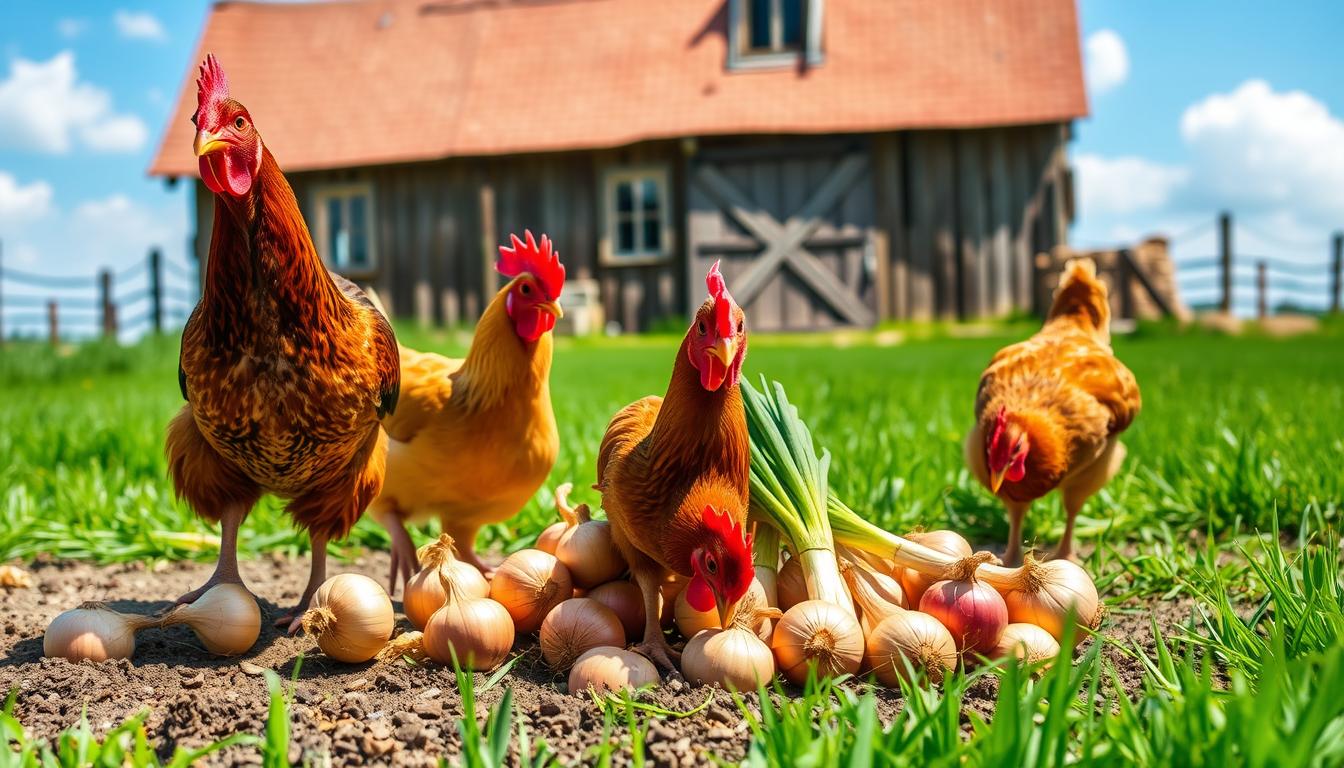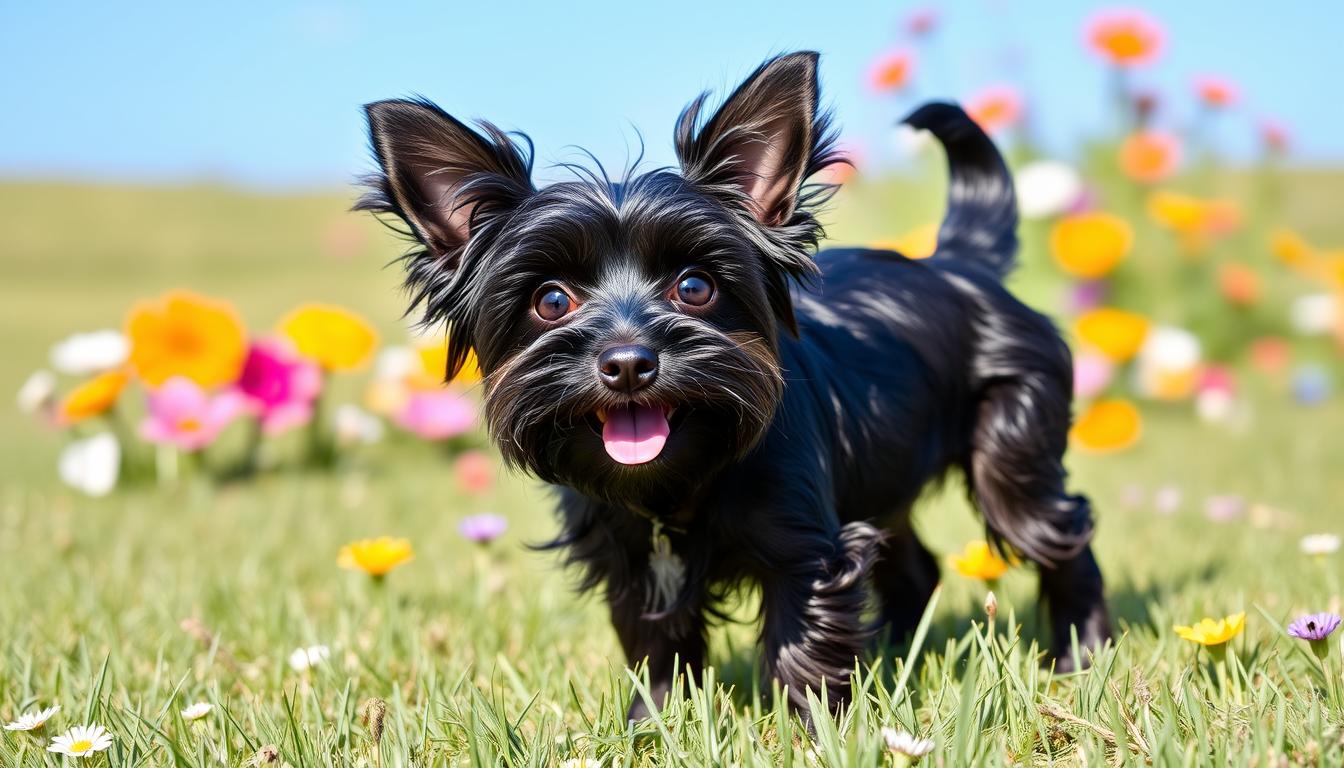Bearded Dragon Black Beard: What You Need to Know
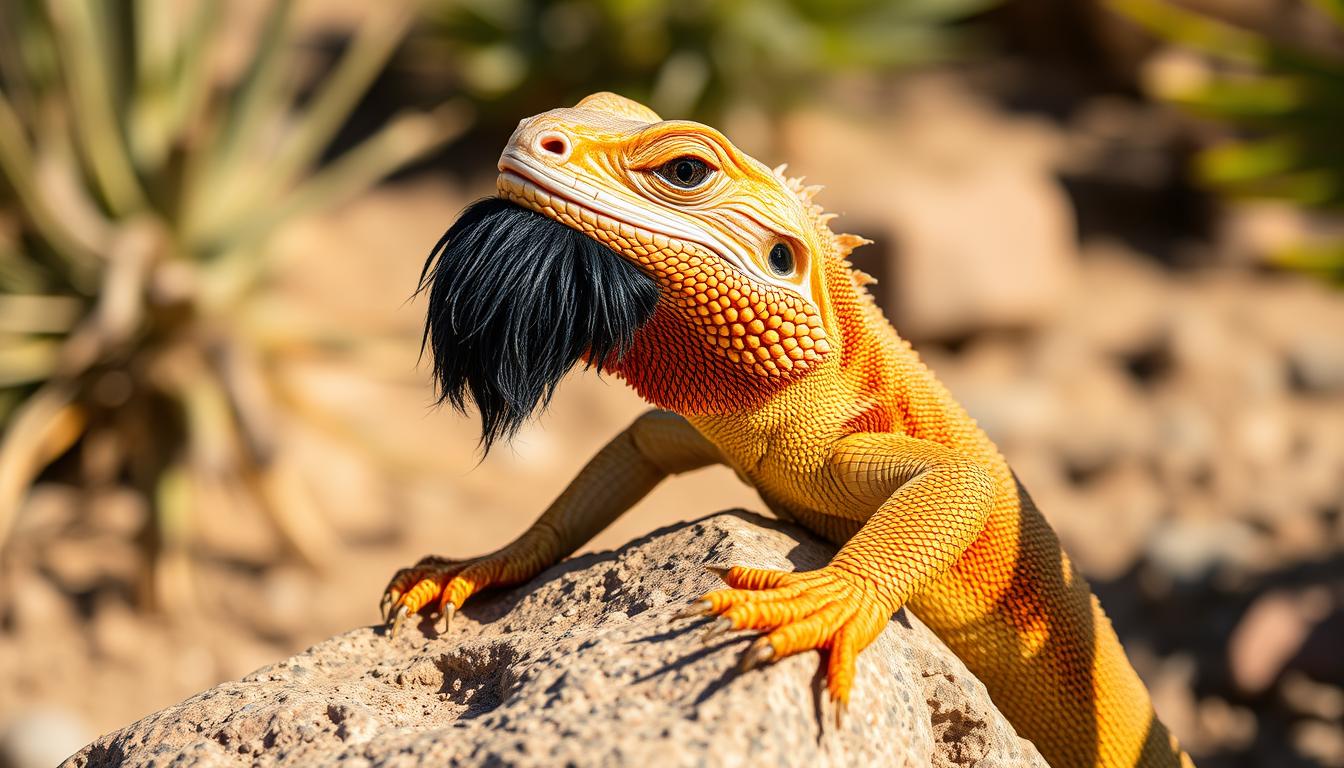
Bearded dragons can grow a black beard, which might mean they’re stressed, sick, or ready to mate. It’s key to understand why and when to see a vet1. As a bearded dragon owner, knowing the signs of a black beard is crucial. This ensures your pet stays healthy and happy, especially when it comes to their care and the black beard issue in reptiles. For more on bearded dragon care, check out bearded dragon black beard topics.
Key Takeaways
- Bearded dragons can develop a black beard due to stress, illness, or mating season2.
- Understanding the causes of black beard is crucial for proper bearded dragon care.
- Recognizing signs and symptoms of black beard can help you take necessary actions to ensure your pet’s health and well-being.
- Bearded dragons require 12 hours of UVB exposure per day for proper health and temperature regulation1.
- Changes in beard color can occur due to various factors, including stress, illness, or environmental changes2.
- Consulting a vet is necessary if your bearded dragon’s beard remains dark after sun exposure or if you notice any unusual behavior or signs of illness1.
- Proper bearded dragon care and attention to black beard in reptiles can help prevent health issues and ensure your pet’s happiness.
Understanding Black Beard in Bearded Dragons
As a bearded dragon owner, it’s key to know why your pet might have a black beard. They can show black beard due to stress, illness, or wanting to mate3. It’s important to spot stress signs and lower your dragon’s stress. A black beard can also mean illness, so watch your dragon’s health closely and see a vet if they act strangely or seem sick1.
Bearded dragons might show black beard if they feel threatened, scared, or want to mate3. They could also do it when they feel territorial, especially if they live with another dragon, or if they don’t trust you3. Knowing these reasons can help you figure out why your dragon has a black beard and how to fix it.
Keeping your bearded dragon healthy is crucial. This means giving them a good home, a balanced diet, and regular vet visits. By understanding their behavior and spotting stress or illness signs, you can stop black beard and keep your pet happy and healthy. For more on reptile health, talk to a vet or a trusted pet care site.
Signs and Symptoms of Bearded Dragon Black Beard
Understanding black bearded dragon care means knowing when your pet is stressed or sick. Bearded dragons may turn black due to stress, illness, or mating1. Stressors include shedding, new places, loud sounds, and being handled too much1. It’s key to recognize these signs and act to lower stress.
Common stress signs in bearded dragons are not eating, diarrhea, being very tired, and hissing1. Seeing these symptoms means it’s time to see a vet. Good caring for a bearded dragon means a nice home, the right food, and vet visits.
Here are some important signs and symptoms to watch for:
- Not eating or showing a decrease in appetite
- Diarrhea or changes in stool quality
- Lethargy or lack of energy
- Hissing or aggressive behavior
If you see any of these signs, act fast. Your bearded dragon needs the right care and attention1.
The Science Behind Beard Color Changes
As a bearded dragon owner, it’s key to know why their beard color changes. The color comes from melanin, a pigment found in many animals’ skin and hair. Research shows that bearded dragons can save up to 85 hours of basking time in cool weather by changing their color4.
A study watched twelve wild bearded dragons at different temperatures and during social times in breeding season. It found that darker lizards warmed up 22 minutes faster than lighter ones4. This shows that color change helps them get active quicker, saving basking time. For reptile health, this is very important.
Hormones and the environment also play a part in beard color. Knowing this helps you care for your pet better. By spotting stress signs and reducing it, you can help your bearded dragon stay healthy and colorful.
Some things that can change a bearded dragon’s beard color include:
- Temperature: Changes in temperature can cause color changes.
- Social interactions: Mating or territorial displays can also change the beard color.
- Light: The light your bearded dragon gets affects its beard color too.
Health Implications of Black Beard
As a bearded dragon owner, knowing about a black beard’s health implications is key. A black beard can signal problems like metabolic bone disease, mouth rot, and tail rot1. It can also mean impaction, breathing issues, or malnourishment1. It’s vital to spot illness signs and act quickly. For more on bearded dragon behaviors, check out reptile health resources.
Stress signs in bearded dragons include hissing, frenzied activity, and avoiding basking1. Changes in temperature can also cause a black beard1. A long-lasting black beard might mean your dragon is not getting enough food or water1. If your dragon acts strangely or seems sick, see a vet for advice on how to treat black bearded dragon.
Here are important health tips for your bearded dragon:
- Watch for stress or illness signs in your dragon
- Feed a balanced diet and keep water fresh
- Keep their environment clean and comfy
- See a vet if your dragon acts odd or seems sick
By following these tips, you can keep your bearded dragon healthy and address black beard issues3. Remember, a black beard can point to many health problems3. Stay informed and act early to protect your dragon’s health3.
Emotional States and Black Beard Connection
As a bearded dragon owner, it’s key to grasp the emotional states and black beard link in these reptiles. Bearded dragon behavior is shaped by stress, breeding, and defending territory. A black beard can signal stress, caused by handling, environment, or health problems5. Spotting these signs and acting quickly is crucial for your bearded dragon’s health.
Bearded dragons show curiosity, seek comfort, and get excited when they see their owners5. They may run back and forth, seek attention, or even give little kisses5. Knowing about these emotional states and black beard signs helps you care for your bearded dragon better.
For more info on pet care, check out pet care websites. Bearded dragons are gaining popularity, and scientists are studying their behavior and emotions6. By understanding their emotional states and black beard connection, you can give your pet a better life and strengthen your bond.
Here are some key points to consider when understanding the emotional states and black beard connection in bearded dragons:
- Stress can trigger a black beard in bearded dragons5
- Bearded dragons can exhibit curiosity and affection towards their owners5
- Recognizing emotional states and black beard connection can help improve bearded dragon care and welfare6
- Bearded dragons can save energy by changing their back color to a darker shade in cool weather7
Environmental Factors Affecting Beard Color
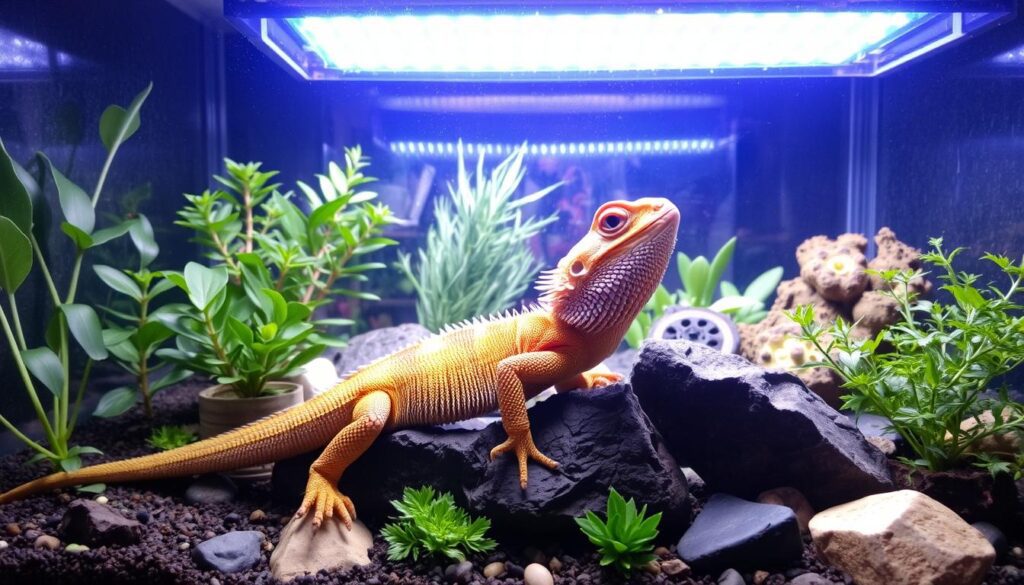
Understanding the environmental factors that affect a bearded dragon’s beard color is key. Bearded dragons change color for reasons like stabilizing their body temperature and communicating. They also change color to blend in with their surroundings8. Their beard color can show how they’re feeling, like if they’re upset or happy8.
Creating a good environment for your bearded dragon is important. This includes the right temperature, lighting, and humidity. A black beard can mean they’re stressed. It’s vital to spot stress signs and act to lower their stress.
Signs of stress in bearded dragons include not wanting to eat, being very tired, not basking, and acting frantically9. To avoid stress, make sure their tank is right, clean it often, keep it quiet, interact gently, and feed them well.
For more tips on caring for your bearded dragon, check out bearded dragon care guides. By following these steps, you can help your bearded dragon stay healthy and have a vibrant beard.
When setting up your bearded dragon’s environment, remember a few key things. They need a temperature between 75-90°F (24-32°C). They also need UVB lighting for 10-12 hours a day. And, the humidity should be between 30-50%.
Treatment Options for Problematic Black Beard
Dealing with a problematic black beard in bearded dragons requires a full plan10. It’s key to spot illness signs early and act fast to keep your pet healthy1. Start by lowering stress, creating a good home, and watching your dragon’s health closely1.
For long-term fixes, think about changing their diet, their living space, and regular vet visits10. It’s vital to tackle issues like metabolic bone disease or lung infections early11. This way, you can keep your bearded dragon happy and healthy.
For more on how to treat black bearded dragon and keep them in top reptile health, talk to a vet and do your homework1. This ensures your dragon gets the best care and love.
Prevention Strategies for Black Beard Issues
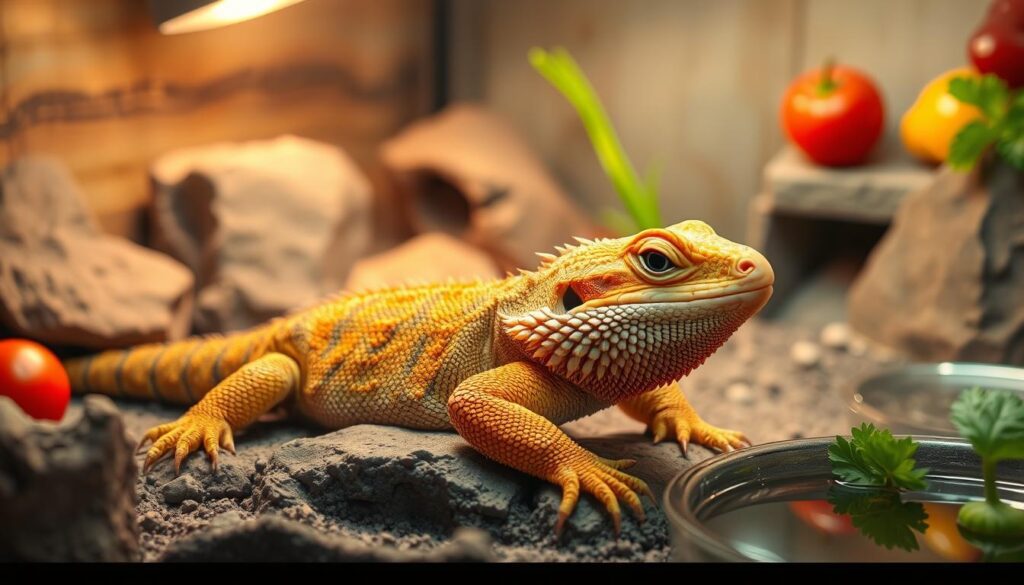
As a bearded dragon owner, it’s key to prevent black beard issues. Proper bearded dragon care and black bearded dragon care can help. Research shows bearded dragons turn black due to stress, sickness, or mating1. To avoid stress, ensure a good environment with the right temperature, lighting, and humidity.
A balanced diet is also crucial. It keeps your bearded dragon healthy. Regular vet visits can spot health problems early. Stress-reducing activities, like handling and enrichment, also help9.
Some important prevention strategies include:
- Habitat maintenance: keeping the environment clean and well-kept
- Diet considerations: feeding a balanced and nutritious diet
- Stress reduction techniques: reducing stress through handling and enrichment
By using these strategies, you can prevent black beard issues. This ensures your bearded dragon lives a happy and healthy life.
Prevention is crucial in bearded dragon care and black bearded dragon care. Taking proactive steps helps your bearded dragon thrive and live a long, healthy life1.
| Prevention Strategy | Description |
|---|---|
| Habitat Maintenance | Ensuring a clean and well-maintained environment |
| Diet Considerations | Providing a balanced and nutritious diet |
| Stress Reduction Techniques | Reducing stress through handling and environmental enrichment |
Conclusion
Understanding your bearded dragon’s black beard is key to their care and happiness. Bearded dragons change colors to show emotions and health12. Knowing why they turn black helps you meet their needs and keep them stress-free13.
Bearded dragons are loved pets because of their friendly nature14. With the right home, food, and care, they can live long, happy lives with you14. Learning about their black beard helps you care for them better and build a strong bond.
FAQ
What is a black beard in bearded dragons?
What causes a black beard in bearded dragons?
How can I recognize the signs of a black beard in my bearded dragon?
What is the science behind beard color changes in bearded dragons?
What are the health implications of a black beard in bearded dragons?
How are emotional states connected to black beard in bearded dragons?
How can environmental factors affect the color of a bearded dragon’s beard?
How can I treat a problematic black beard in my bearded dragon?
How can I prevent black beard issues in my bearded dragon?
Source Links
- https://dragonsdiet.com/blogs/dragon-care/why-do-bearded-dragons-beards-turn-black – Why Do Bearded Dragons’ Beards Turn Black?
- https://www.veterinaryemergencygroup.com/post/the-bearded-dragon-the-mystique-of-the-black-beard – Why Your Bearded Dragon’s Beard is Black
- https://reptile.guide/bearded-dragon-black-beard/ – Bearded Dragon Black Beard: Top 9 Reasons (& When to Worry)
- https://www.sciencedaily.com/releases/2016/06/160608112943.htm – Bearded dragons change color on different body parts for social signals and temperature regulation
- https://beardeddragonsworld.com/bearded-dragons-emotions/ – Bearded Dragons Emotions: Understanding and Reading
- https://theanimaltalent.agency/scaling-new-heights-with-lizards/ – Exploring the Rise of Bearded Dragons as Media Icons
- https://www.unimelb.edu.au/newsroom/news/2016/june/bearded-dragons-change-color-on-different-body-parts-for-social-signals-and-temperature-regulation – Bearded dragons change colour on different body parts for social signals and temperature regulation
- https://reptilinks.com/blogs/news/7-things-owners-need-to-know-about-bearded-dragon-colors?srsltid=AfmBOopq3sdTYyBmfIopV4xmuEUREEsuSrI8btrD-JEyPidyHQ-PZTie – 7 Things Owners Need to Know About Bearded Dragon Colors
- https://dragonsdiet.com/blogs/dragon-care/bearded-dragon-stress-marks-and-other-signs-of-stress-plus-how-to-calm-your-stressed-bearded-dragon – Bearded Dragon Stress Marks and Other Signs of Stress
- https://vcahospitals.com/know-your-pet/bearded-dragons-diseases – Bearded Dragons – Diseases | VCA Animal Hospitals
- https://reptilesupply.com/blogs/bearded-dragons/common-diseases-in-bearded-dragons – Common Diseases In Bearded Dragons
- https://beardiebungalow.com/bearded-dragon-beard-black/ – The REAL Reason Your Beardie Turned Its Beard Black!
- https://www.hepper.com/why-does-a-bearded-dragon-turn-black/?srsltid=AfmBOoo7rjvS922eXFM6xbi_7DW0xzrxNdzBD2apVWoNhdlQFWsEGUD2 – Why Does a Bearded Dragon Turn Black? 13 Likely Reasons | Hepper
- https://www.veterinarypracticenews.com/a-practitioners-guide-to-bearded-dragons/ – A practitioner’s guide to bearded dragons


